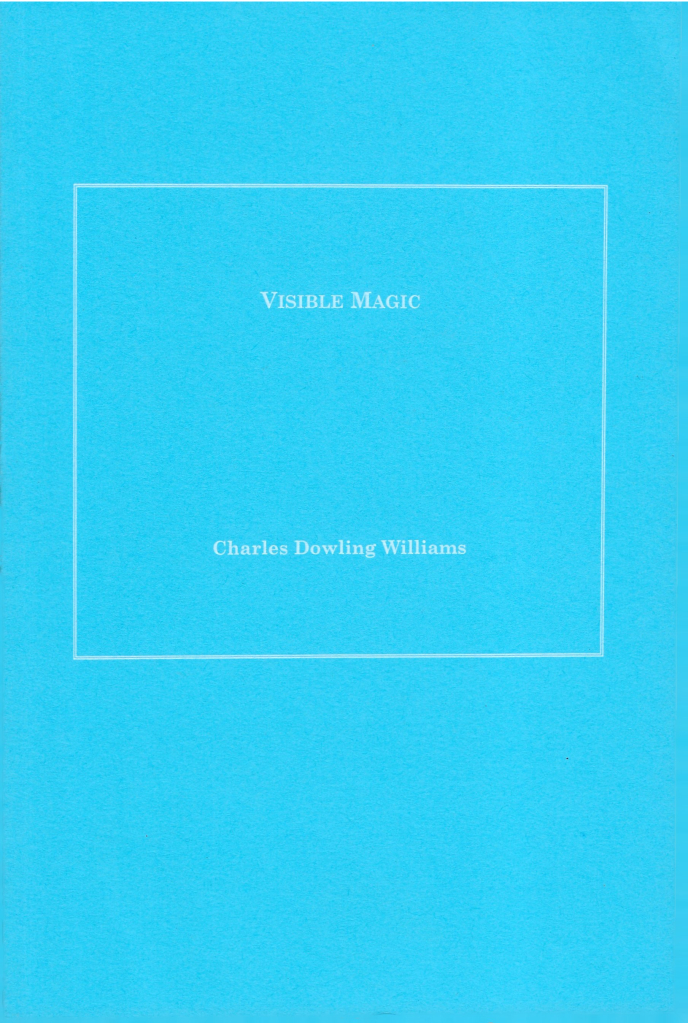Poet: Charles Dowling Williams
ISBN: 9781737639534
Upon delving into award-winning Kentucky native Charles D. Williams' recent Haiku collection, Visible Magic, I was immediately captivated by his remarkable ability to distill the intricacies of human experience and the natural world into concise words, evoking moments of profound reflection and connection.

Williams takes us on a captivating journey through all four seasons, skillfully crafting Haiku that serve as vivid snapshots of the changing tapestry of nature.
Drawing inspiration from decades of farm journal entries, his keen observations and profound reverence for the natural world shine through in each poem. Beyond mere description, his verses interweave the elements of farm life, the changing landscape, and the interconnectedness of nature.
For those unfamiliar with Haiku, it is a traditional Japanese poetry form celebrated for its brevity and simplicity. Its charm lies in its capacity to encapsulate a moment or evoke a feeling with a few words.
Haiku comes from a kind of Buddhism called Zen, which likes being in the present moment and finding beauty in ordinary things. Additionally, the poems explore universal themes such as impermanence and the cyclical nature of life. These broader concepts make haikus resonate with individuals across diverse cultures, fostering a connection through shared emotions and experiences.
The poems are concise, just three lines with a certain number of syllables in each line. This brevity makes Haiku writers focus on the most critical parts of their thoughts. It often talks about nature and the seasons, using words that show the time of year.
For example, if we refer to Williams' opening of his collection, "Summer," we notice the vivid snapshot of the season.
"first dawn of summer-
basso profundo choice
old buildings singing
sleepy summer rain
hillside of ox-eye daisies
a Buddha napping."
With a classic 5-7-5 syllable structure, the poem beautifully captures the first dawn of summer, old buildings singing with nostalgia, sleepy summer rain, a hillside adorned with ox-eye daisies, and a tranquil scene of a Buddha napping. The brevity enhances the impact, promising readers a collection that reflects on the simplicity and beauty of summer, weaving together rich sensory details and moments of reflection.
The beauty of Haiku and Williams' poems is that although brief, they make you feel deep emotions and reflect. Using simple words and pictures lets your imagination see different things in the verse.
Another example from Williams' collection is the following:
"last day of winter-
viewing my neighbor's spring lambs
their ears twitch sideways."
Here, he captures the essence of transition and the cyclical nature of seasons, from winter to spring. He begins on the "last day of winter" by observing "spring lambs" in a neighbor's surroundings. Williams adds a vivid touch by mentioning the lambs' ears twitching sideways, making the scene more alive for readers. In addition, there is also a subtle sense of community as he focuses on the neighbor's lambs, suggesting a shared appreciation for nature.
The tone shifts positively, signaling renewal and hope with the arrival of spring. Williams' simplicity of language and imagery invites readers to reflect on the beauty of nature's cycles and shared experiences within a community.
The poem is undoubtedly open to interpretation, allowing readers to bring their own emotions and experiences to the poem.
In the 28 September 2022 entry we have a great example of how a short poem can express deep feelings. It discusses a specific day four months later, describing eight lively puppies and comparing their barking to a joyful "Hallelujah Chorus." This Haiku shows how poetry can capture the happiness of memorable moments, even in a few words. It's a simple and beautiful illustration of how language can convey the magic of fleeting experiences.
"eight big pups barking
their Hallelujah Chorus-
the sound of blessings."
These are only a few examples of William's Haikus, each serving as poetic snapshots that skillfully distill moments of nature, transition, and joy into concise and evocative verses. Through the simplicity of language and vivid imagery, these haikus capture the beauty of fleeting experiences and invite readers to reflect, fostering a shared appreciation for the profound emotions woven into the tapestry of everyday life.
Williams' concise poems stir profound emotions and provide contemplative moments, rendering Visible Magic essential for anyone eager to delve into the captivating influence of Haiku and its exploration of universal themes. Grab a copy of Visible Magic and submerge yourself in short powerful moments where a few lines of verse capture deep feelings and the beauty of life. It's like taking a quiet break from the noise, finding pictures and emotions painted with simple words that stay with you.
Follow Here To Read Norm's Interview With Charles Dowling Williams
Norm Goldman of Bookpleasures.com